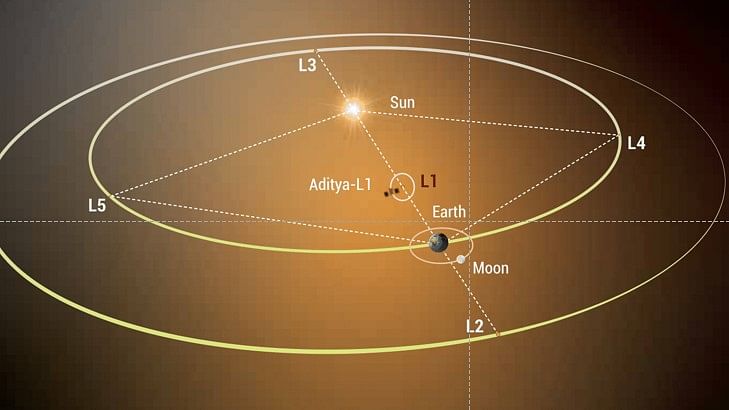
Illustration of Aditya-L1's position at Lagrange Point 1.
Credit: X/@isro
Bengaluru: The Indian Space Research Organisation (ISRO) said on Tuesday that an instrument on India’s first space-based solar observatory Aditya-L1 has made recordings of the impulsive phase of solar flares.
The High Energy L1 Orbiting X-ray Spectrometer (HEL1OS) on board Aditya-L1 made the recordings during its first observation period on October 29, from approximately 12:00 to 22:00 UT. The recorded data is consistent with the X-ray light curves provided by the Geostationary Operational Environmental Satellites (GOES) operated by the US’ National Oceanic and Atmospheric Administration, ISRO said.
HEL1OS, developed by the Space Astronomy Group of ISRO’s U R Rao Satellite Centre, is designed to capture the early, impulsive phase of solar flares – the sudden, explosive releases of enormous amounts of energy. The data from HEL1OS enables researchers to study the explosive energy release and electron acceleration during the impulsive phases of these events.
While these flares have been studied in X-rays and gamma-rays for decades, the initial impulsive emission is very difficult to characterise and understand, ISRO noted. HEL1OS comes with detectors that can address these challenges with their capability to cater to different energy ranges and provide high spectral and time resolution measurements.
HEL1OS was commissioned on October 27 and has been monitoring the sun for hard X-ray activities, the space agency said.
ISRO, in a graphical representation, marked the impulsive phase of the flare as distinguishable from the GOES observation. It also marked the strongest event during the observation period, a C6 class flare at 13:00 UT.